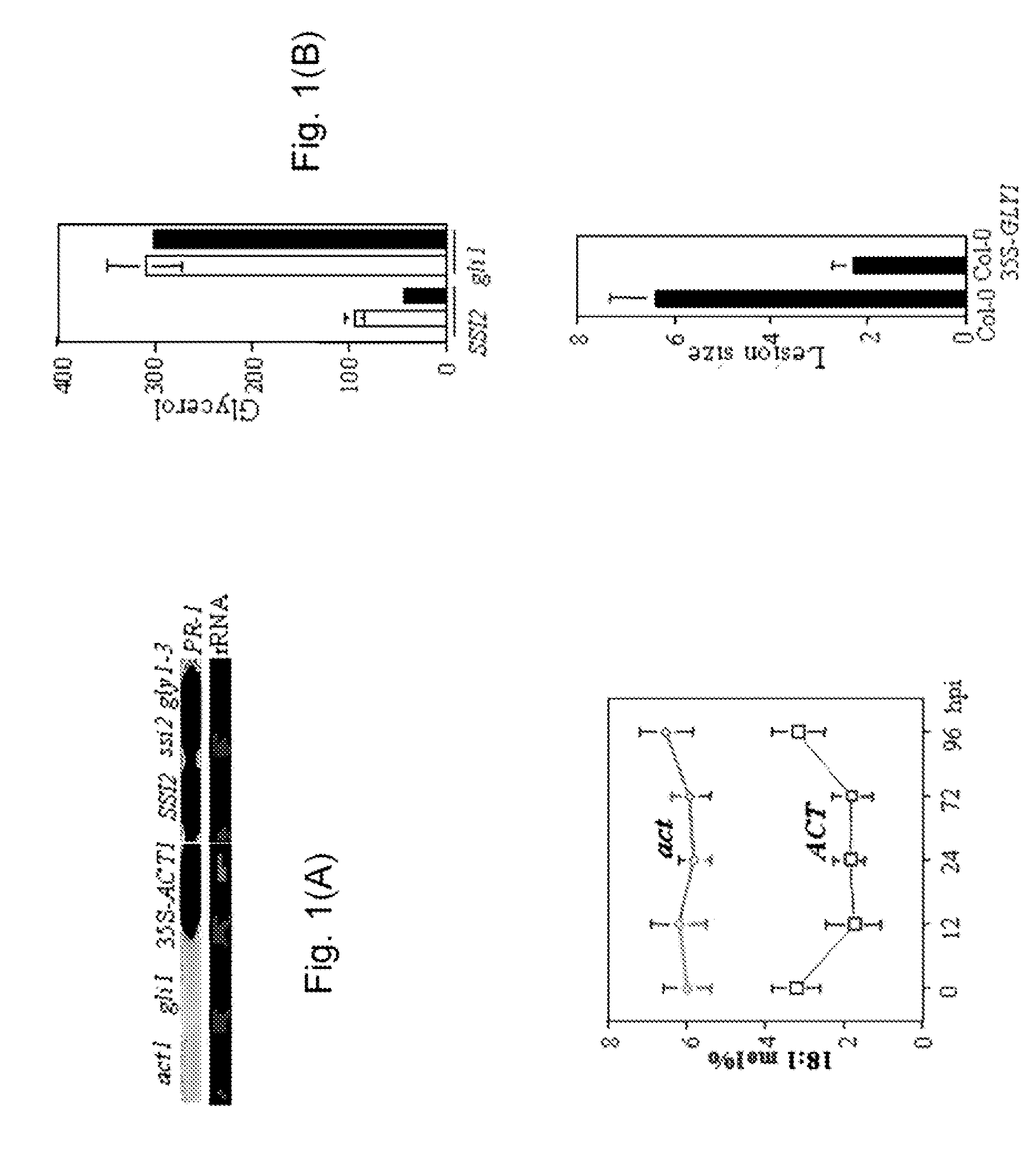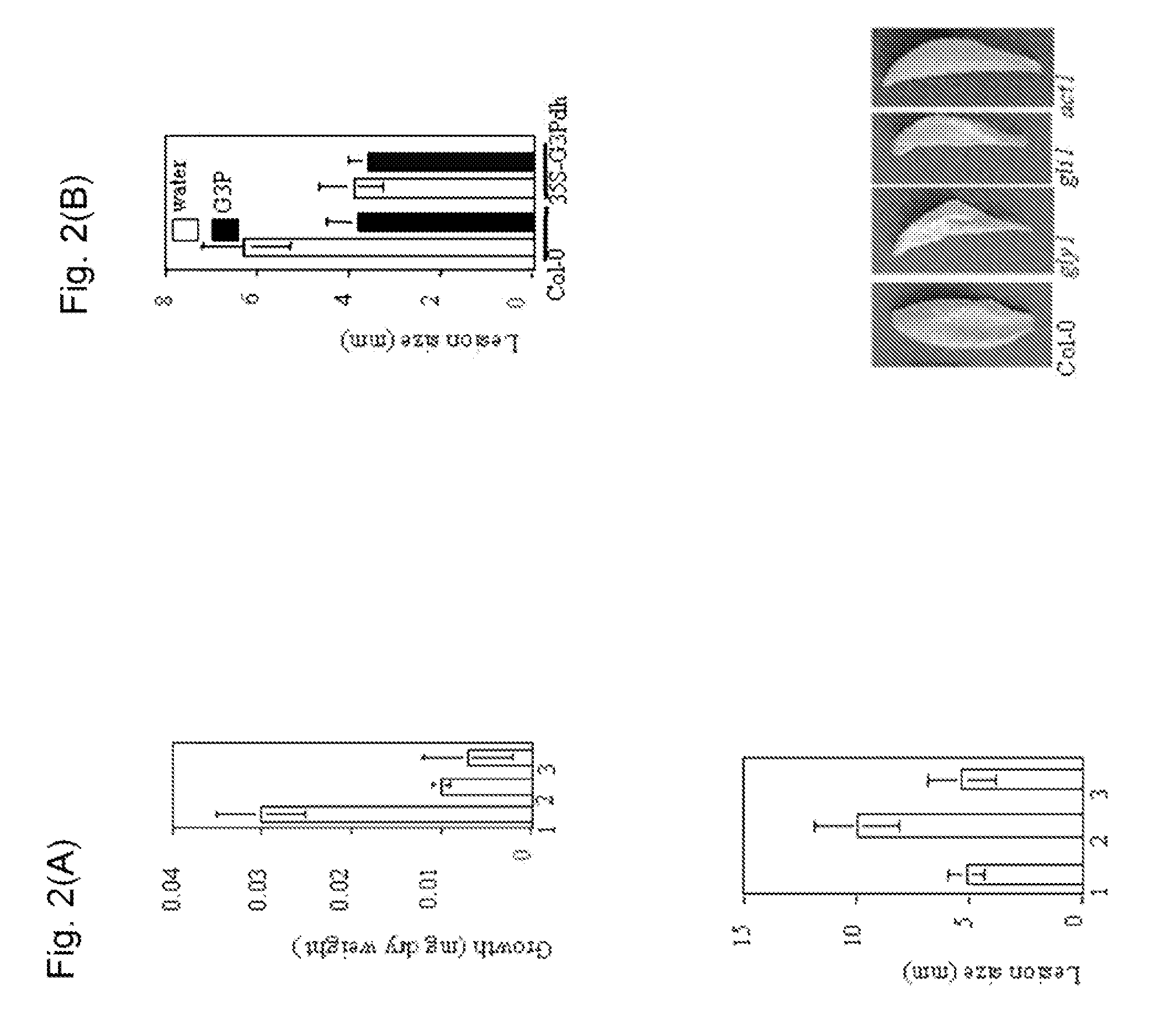Plants having an enhanced resistance to necrotrophic pathogens and method of making same
a technology of necrotrophic pathogens and plants, which is applied in the field of plants having an enhanced resistance to necrotrophic pathogens and the method of making same, can solve the problem of difficult to rigorously test this hypothesis, and achieve the effect of enhancing the resistance to necrotrophi
- Summary
- Abstract
- Description
- Claims
- Application Information
AI Technical Summary
Benefits of technology
Problems solved by technology
Method used
Image
Examples
examples
Methods
Plant Growth Conditions and Genetic Analysis
[0038] Plants are grown in the MTPS 144 Conviron (Winnipeg, MS, Canada) walk-in-chambers at 22° C., 65% relative humidity and 14 hour photoperiod. Mutations affecting the SA-signal transduction pathway are transferred in the ssi2 background by pollinating flowers of the ssi2 plants with pollen from npr1-5, eds1-2, pad4-1, eds5-1, ndr1-1, or sid2-1 plants. The ssi2 nahG transgenic plants used are described in more detail in Shah et al., 2001. Mutations affecting fatty acid desaturation (fad) or lipid biosynthesis are transferred in the ssi2 background by pollinating flowers of the ssi2 plants with pollen from fad3-1, fad4-1, fad5-1, fad6-1, fad7-2 and fad7-1 fad8-1. The ssi2 dgd1 and ssi2 gli1 plants are obtained by pollinating flowers of the ssi2 plant with pollen from dgd1-1 and gli1 plants, respectively. The ssi2 dgd1 act1 plants are obtained by pollinating flowers of the ssi2 dgd1 plant with pollen from ssi2 act1 plants.
[003...
PUM
| Property | Measurement | Unit |
|---|---|---|
| resistance | aaaaa | aaaaa |
| morphology | aaaaa | aaaaa |
| pathogen resistance | aaaaa | aaaaa |
Abstract
Description
Claims
Application Information
 Login to View More
Login to View More - Generate Ideas
- Intellectual Property
- Life Sciences
- Materials
- Tech Scout
- Unparalleled Data Quality
- Higher Quality Content
- 60% Fewer Hallucinations
Browse by: Latest US Patents, China's latest patents, Technical Efficacy Thesaurus, Application Domain, Technology Topic, Popular Technical Reports.
© 2025 PatSnap. All rights reserved.Legal|Privacy policy|Modern Slavery Act Transparency Statement|Sitemap|About US| Contact US: help@patsnap.com



